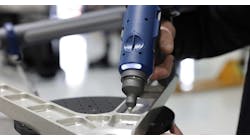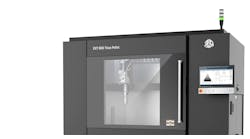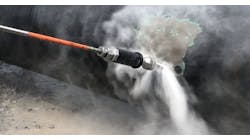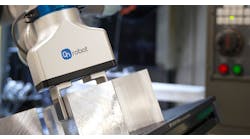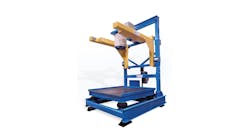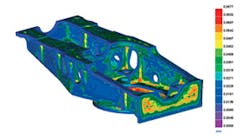ESI GROUP has released a new software suite it indicates will allow metalcasting operators to forecast the entire casting process, including filling and solidification defects, mechanical properties of finished castings, and the nature of complex part defects. The new ESI Casting Simulation Suite includes the developer’s ProCAST and QuikCAST programs, and allows the operators to achieve rapid visualization of the casting process result to allow them to make accurate decisions during the design stage.
The new release includes ESI’s ProCAST and QuikCAST programs, along with new developments in micro modeling that allow forecasting of the microstructure and assessment of the resulting mechanical properties of ferrous and nonferrous alloys.
The developer has an established record in casting process simulation software that builds on the physics of the cast materials. The ESI suite consists of numerous applications that simulate a product's behavior, to fine-tune manufacturing processes in accordance with desired product performance, and to evaluate the environment's impact on performance.
The new Casting Simulation Suite 2010 allows an engineer or designer to incorporate each production process stage, step-by-step – from die and mold design through to the component's performance during its productive life.
ESI emphasizes several enhancements in the new release, including important developments in micro modeling that allow prediction of the microstructure and assessment of the resulting mechanical properties for ferrous and nonferrous alloys, both as-cast and after heat treating. Calling this feature a “major technological breakthrough,” ESI points out that it means foundries can identify the precise heat-treatment parameters necessary to obtain the required properties for austempered ductile iron (ADI) components. It adds that this capability means that foundries can thus engineer products in ADI that will have better qualities (stronger, lighter) than steel, and thus better value.
"ProCAST’s recent developments prove to be excellent for predicting the microstructure and the basic mechanical properties of casting materials,” stated Dr. Antton Melndez Arranz, a metallurgist with Tecnalia, a multi-disciplinary Spanish industrial research group that specializes in metalcasting R&D. “Using the microstructure module, the simulation of local graphite expansion is possible with a sensitively higher accuracy for shrinkage defects prediction. The microstructure module opens up a new line of possibilities and makes other types of analyses possible, particularly in relation to metallurgical quality level adjustments, according to the inoculation parameters in simulation."
Casting Simulation Suite 2010 also includes a new optimization module. With just one simulation, engineers must set the best conditions for the design or process to reach objectives, such as minimizing porosity or improving yield. Using the new optimization module, several simulations of the same process are run automatically, with slight variations of the input parameters. The new suite includes solutions and enhancements in gas porosity predictions, pin squeeze, air entrainment, thermal modulus, and results extraction, according to ESI.
“When you have the right tool in your hands, you can easily get quick and optimal solutions arising from extremely complex problems in superalloy foundries. ESI's software has the potential to do this,” according to Ciro Caramiello, Ph.D., who directs process modeling efforts at EMA Rolls-Royce, a manufacturer of precision advanced micro-castings for aerospace engines.
“Our growing and faithful installed base demonstrates the relevancy of our solution for foundries, whether they require a quick estimate or a more advanced and complete diagnosis,” according to Marco Aloe, casting product manager for the ESI Group. “Our goal remains to develop tailored tools to help foundries efficiently design the best quality part and meet performance criteria. Included in version 2010 are developments in microstructure, stress, optimization and interfaces to specifically meet our customers' challenges."
